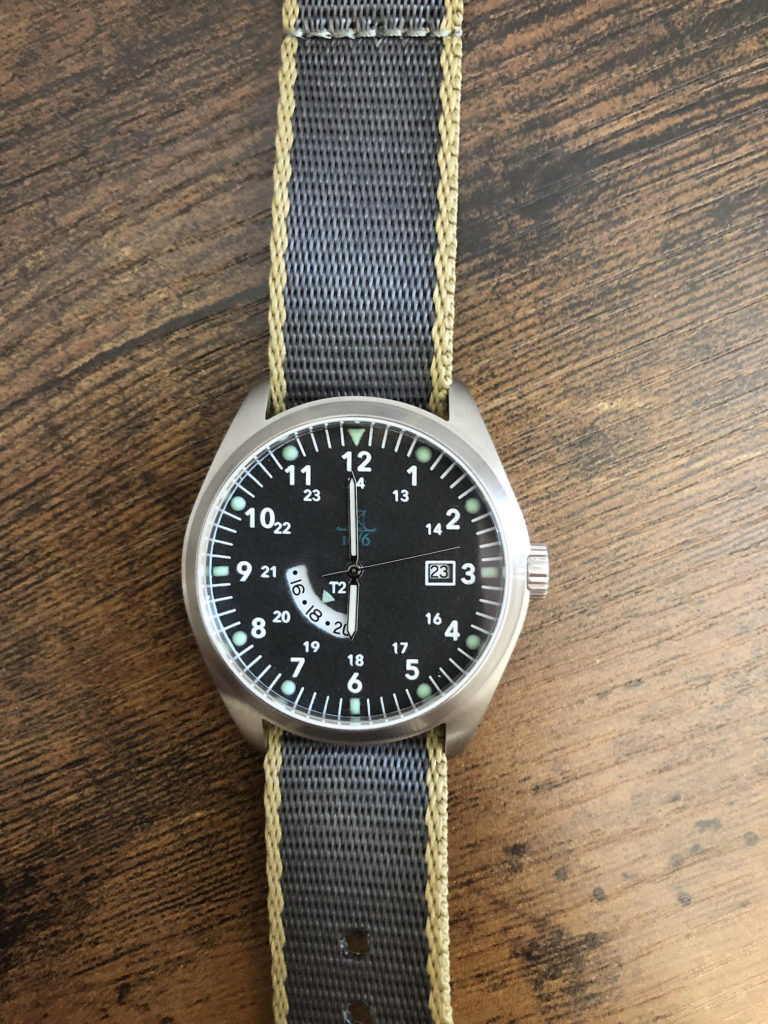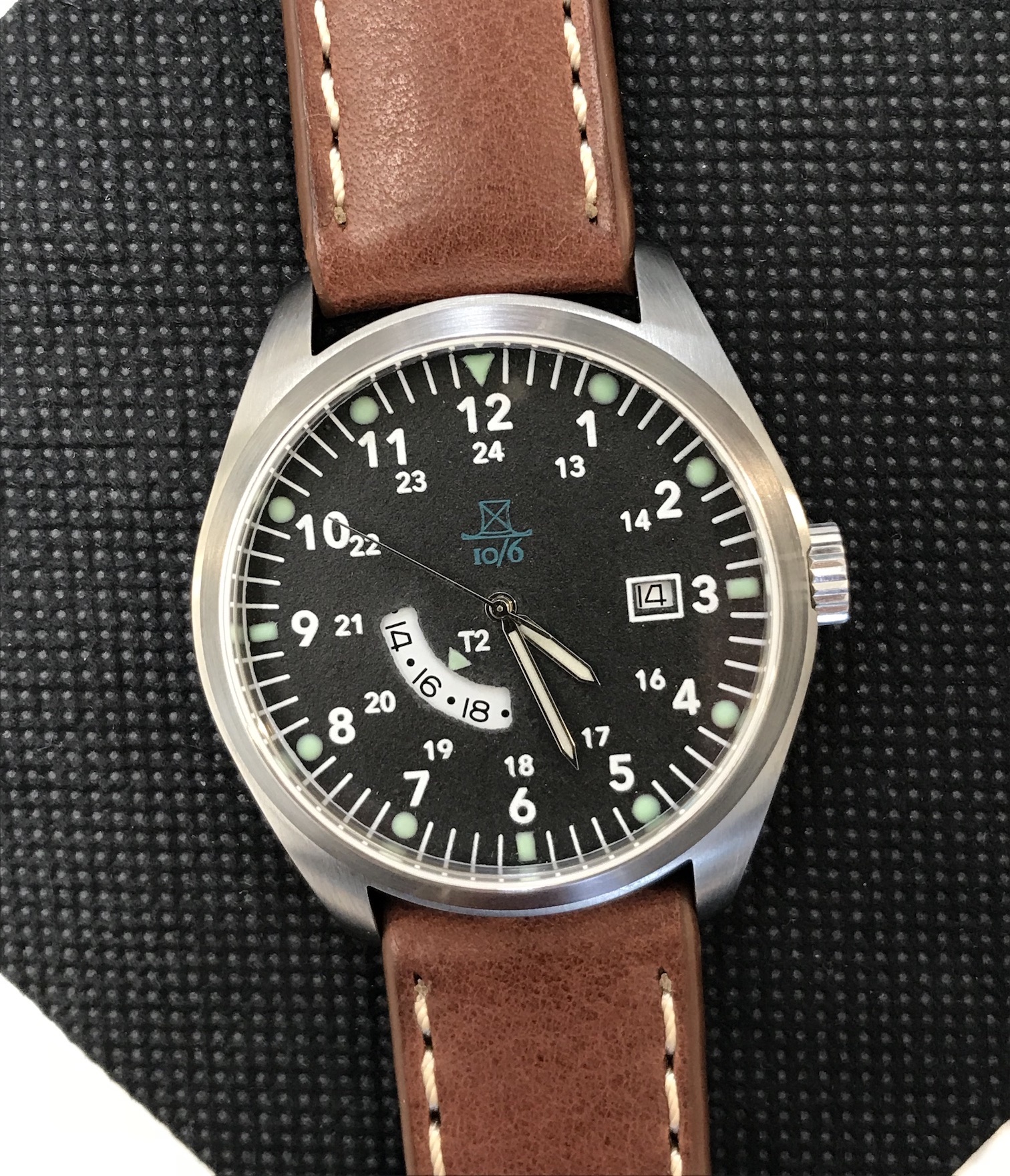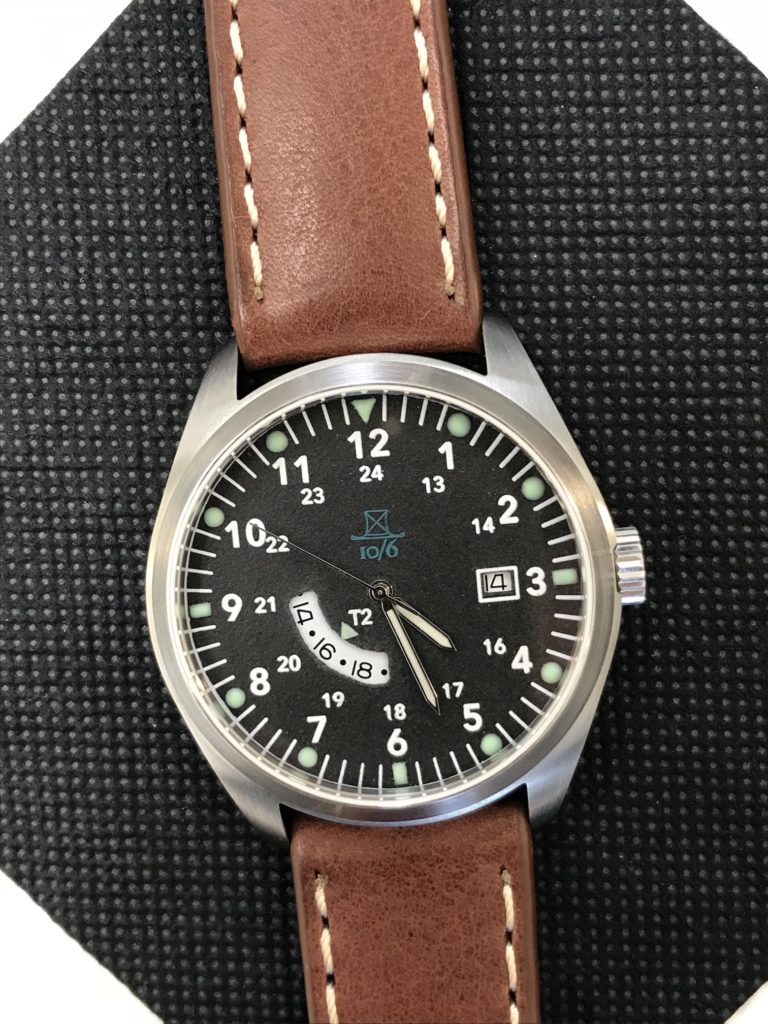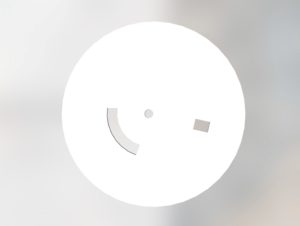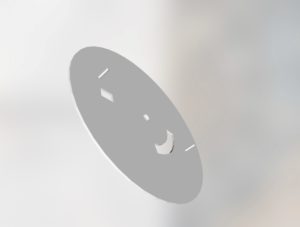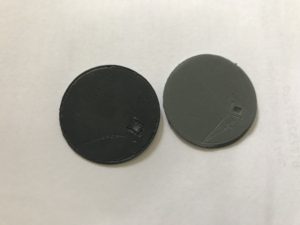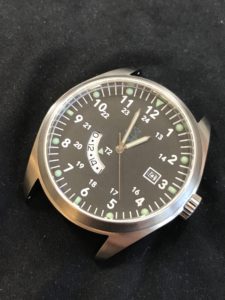Duel Time
Creating custom watches for clients is one of the most rewarding aspects of my watch-related activities. My brand 10/6 (Ten Six) is what I have dubbed a nanobrand, because I build one-off timepieces as opposed to larger production runs. I revel in working one-on-one with a customer to bring our collective vision to their wrist. Having a connection with my clients beyond an exchange of money for a watch is important and necessary for my work.
Duel Time, what I hope is an obvious play on words, is a project that I agreed to take on for several reasons: the idea, the challenge, and the customer.
In my Making Custom Dials and Watches video series, I describe some of the process and a look at the final product, but this page provides a more detailed description of the process I went through to create this watch.
*The design and/or process may not be everyone’s cup of tea (consider checking out my Tea Party model). To be frank, your opinion does not matter. My projects are custom built for clients based on what they like and my own process of discovery in watchmaking. If you don’t like something about the watch or process, I recommend you try making one yourself or create your own content and share it with the world so people can learn. If you are unwilling to do either then zip it.*
https://youtu.be/PmY498QqJFo
The details:
- Model: 10/6 Duel Time
- Diameter: 42mm
- Height: 11.1mm
- Lug-to-lug: 49mm
- Case: Stainless steel, brushed
- Movement: Swiss Ronda 515.24D, Quartz
- Battery: 371/SR920SW
- Lume Markers: Bergeon 5680V-07 Green Luminova
- Lume Hands: Japanese 8-hour lume
- Accuracy: +-10 seconds/month
- Crystal: Sapphire, Flat
- Water Resistance: 100m/300ft
- Strap Width: 20mm
The Idea
The story goes something like this…
Potential customer contacts me saying:
Hello,
I came across your Etsy store and liked what I saw. I’m wondering if you are willing to sell a custom watch?Specifically, I’m looking for a rugged quartz GMT watch, with the 2nd time zone time on a “date-wheel”, like the Hamilton Khaki Navy GMT H77615333 (shown below next to “T2”). Is this possible? I’d love to talk more specifics with you.
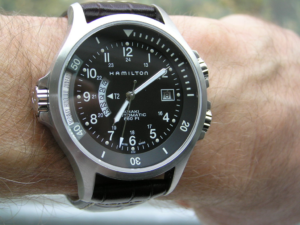

Anyway, I send a short response back saying something to the effect of…
thanks for emailing me, that is an interesting idea, it may or may not be possible, what other GMT layouts do you like?
Again, my form helps with this initial communication, but what I really care about is the second email back. In this situation, the person understood the process, provided visual examples, and had a list of desired specs. The communication effort indicated someone who probably cared enough to dig into details, would provide feedback with each step, and is prepared for a back-and-forth process.
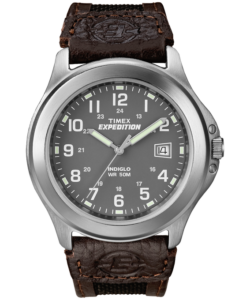
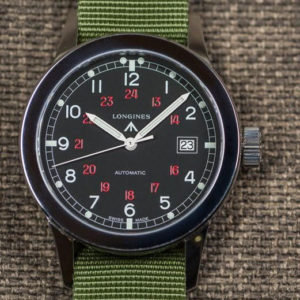
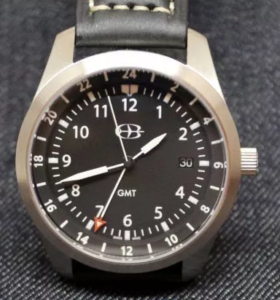
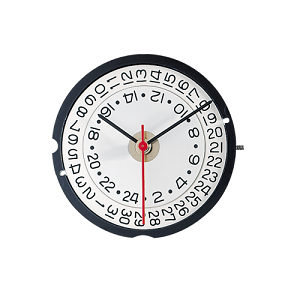
The main requirements were as follows:
– stainless steel case
– some sort of crown protection (guard or screw down)
– 39-42mm diameter
– quartz (military, rugged, precise)
– dark grey dial
– date
– large numerals for 1-12, with 13-24 smaller below
– second time zone
– lumed hour and minute hands
– lumed markers
Compare the initial requested specs with the final Duel Time specs and you will find they are in sync.
For the movement, I chose the Swiss Ronda 515.24D. The 515.24H is more common, using a hand for the second timezone in traditional GMT style. Alternatively, the readily available 24D model uses a wheel, which provides a more unique look.
The Process
To describe the steps of making this watch, I will use pictures with some context.
Dial Design
A dial design goes through many revisions.

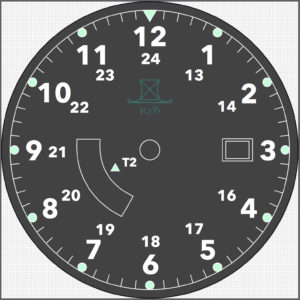
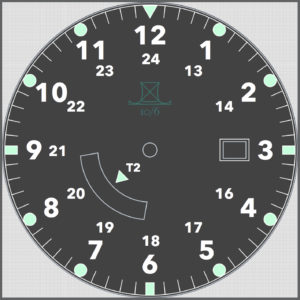
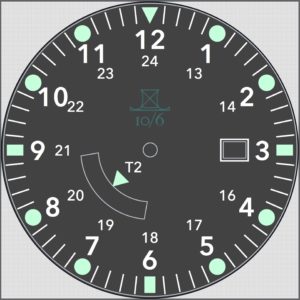
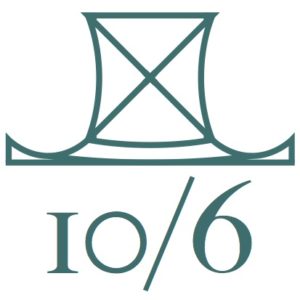
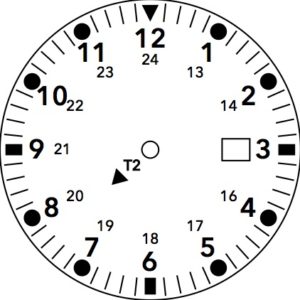
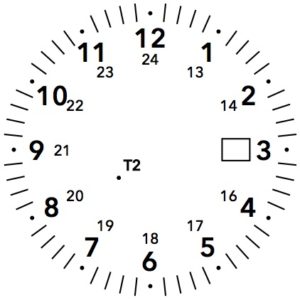
(Left: for paper printing, Right: for laser etching)

Throughout the design phase I am also drafting and 3d-printing sample dial blanks to verify size, form, and fit to test with the movement and case. Having the movement specification documents is very helpful for ensuring correct dimensions for something like a custom window.

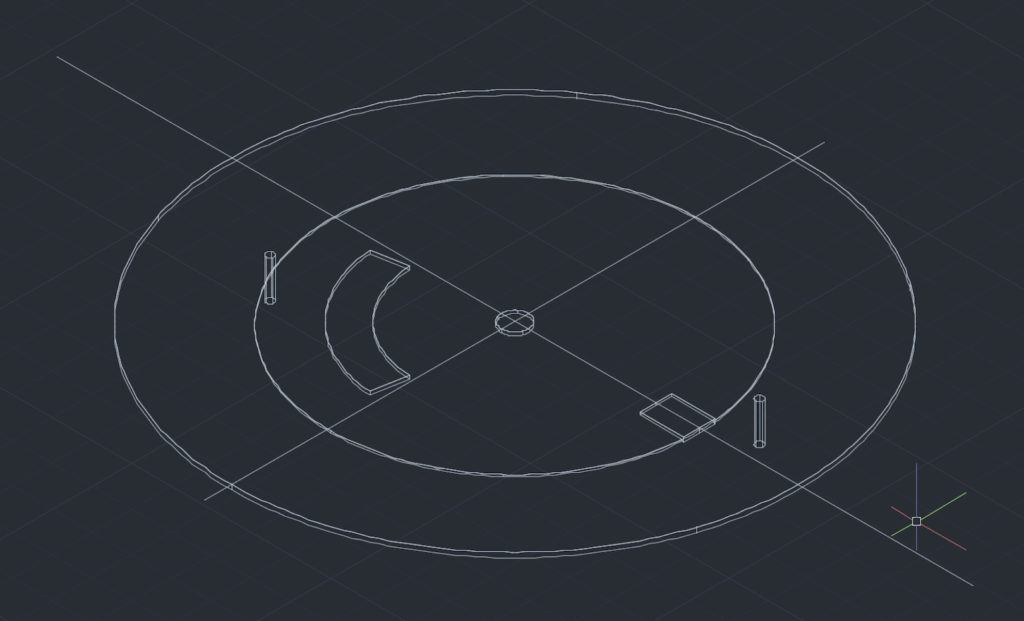
Having the designs means I can make dials and plates.
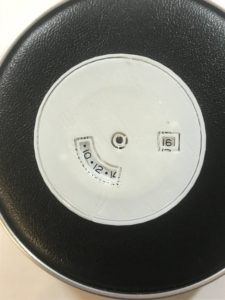
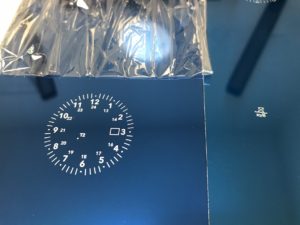
The Case
Having the case around is important for all things testing. The customer wanted a completely brushed case. The best case I could find per the spec had brushed sides and lugs, but the bezel, crown and caseback were polished. So I brushed those parts myself. All it takes is time, care, and a Scotch-Brite pad. I kept the bezel brushing horizontal, while the look for the crown and back was general brushing with some variability.
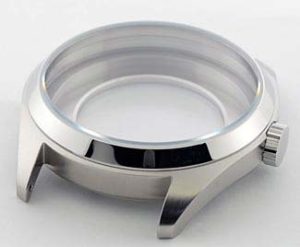
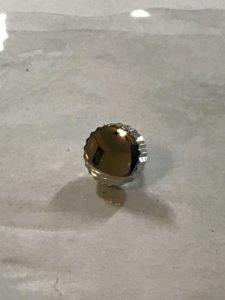
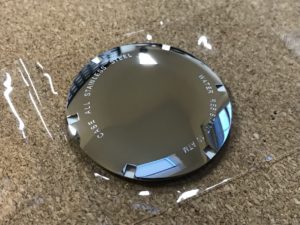
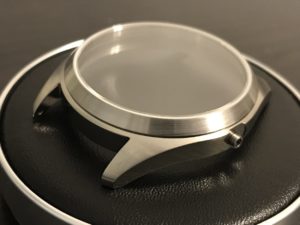
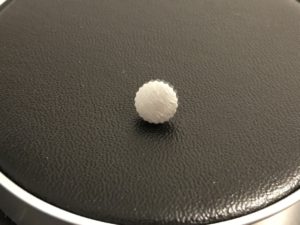
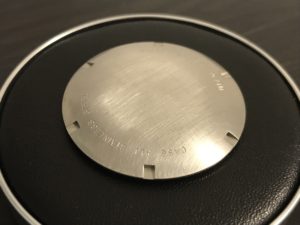
Dial Making
With prep work done, the actual dial making can begin. Dial making often means juggling lots of different processes.
The dial needed to be 35.8mm diameter, dial feet to fit the 515.24D, have a date window at 3, and a timezone window between 6 and 9. You would never find that combination for purchase anywhere, because of the custom arc window. The other specs are not too abnormal, so I was able to purchase complete dials that just needed the custom window cut.
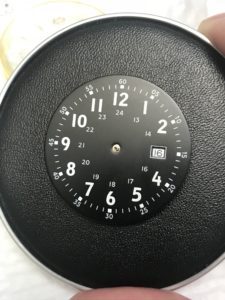
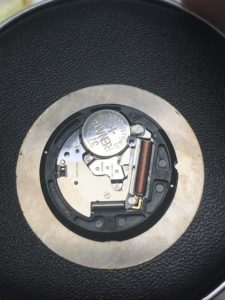
I use scrap 3d blanks to test base colors. The customer wanted a dark grey and I ended up using a dark grey automotive primer of all things.
I toyed with two different base colors, knowing that the final clear coating would lighten the overall look. Dials + custom window + base paint + pad printing = the following.
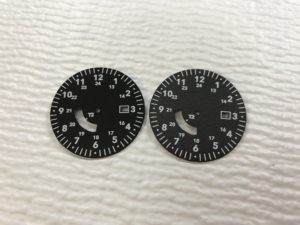
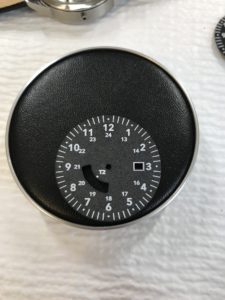
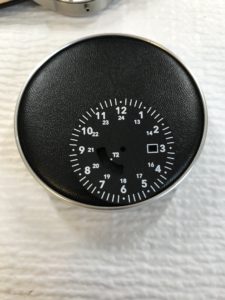
The color the customer wanted for my 10/6 logo proved an interesting challenge. I tested the process of painting applied markers that I have laser cut in Hong Kong, which I prefer in silver. In the end, I decided to pad print the logo.
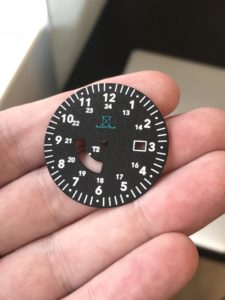
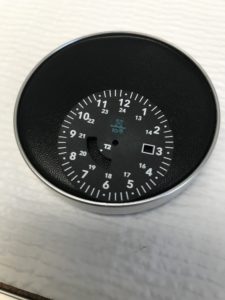
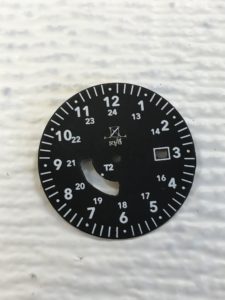
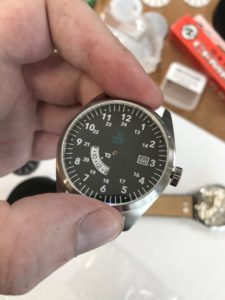

Note the timezone window in the test dial above was cut a hair too wide. So I used it as a test dial through all the steps.
Applying Lume
I used this project to illustrate applying lume for my video series, but here are some more pictures.
https://youtu.be/kLATx3JZzwE
An alternative to lume compound is lume tape. I tested two different types from Identi-Tape: Jessup 7530 and 7550. Both tapes were good and cutting is simple, but the customer preferred traditional lume.
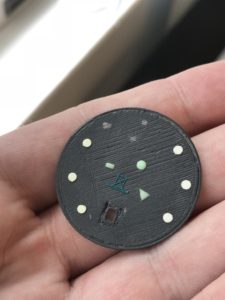
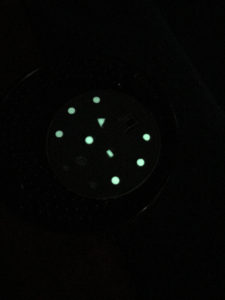
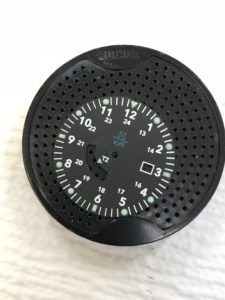
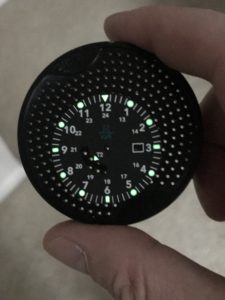
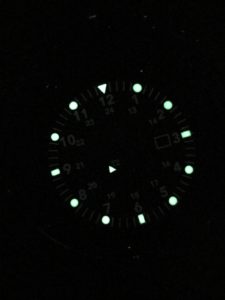
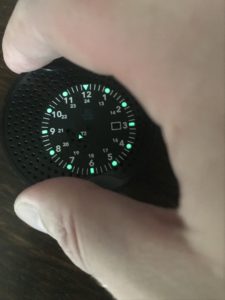
Dial Texture and Coating
You might see in some pictures above that several imperfections and texture variations exist in the dials. A certain amount is expected with my process and each dial has a unique handmade feel. But, I still like evening things out to a certain extent, sealing the paint, and providing some additional UV protection for the colors.
The customer wanted a matte finish, so I applied about ten thin layers of UV resistant matte clear coat paint to the finished dial. You can see this process evens out the surface and slightly lightens the color.
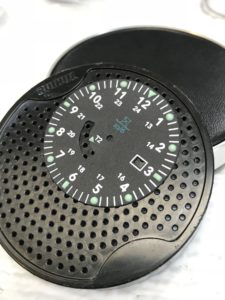
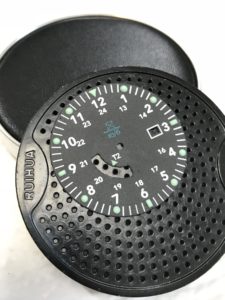
Here are three dials in different stages.
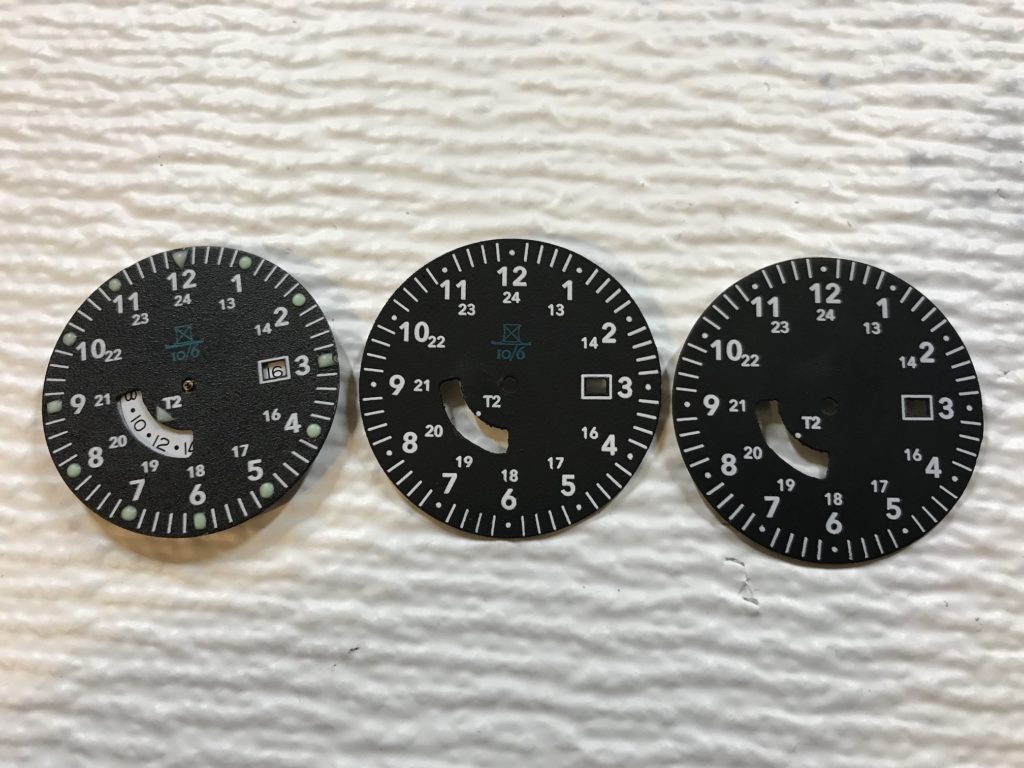
A Custom Spacer Ring
With the dial done, we move to a casing issue. The movement is a little thinner (about 1mm) than the intended mechanical movements for the case, so I knew I would have to come up with a solution to raise the movement and align it with the stem.
https://youtu.be/0UVG3raLASo
The solution was a bit of a surprise to me. I tried something on a whim and was thrilled with the result. I explain the whole process in the video (sorry for the weird sounds), but in short I 3d-printed a white ring, which adds depth to the dial, connects the markers, and adds more white.
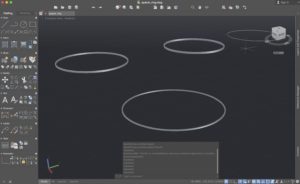
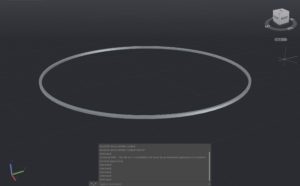
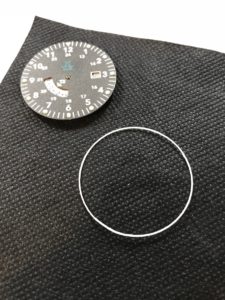
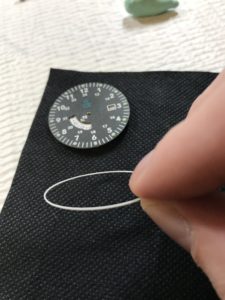
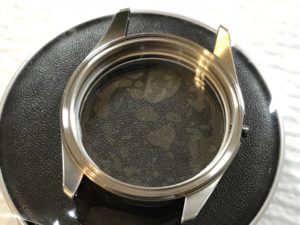
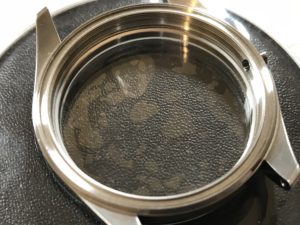
Once the ring is placed, I can see how the dial and movement fit on top, place the movement holder, and ensure the tension ring and caseback correctly seal.
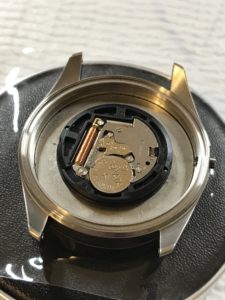
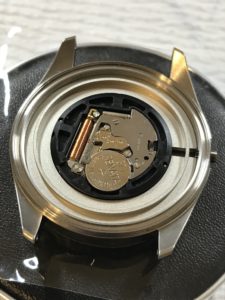

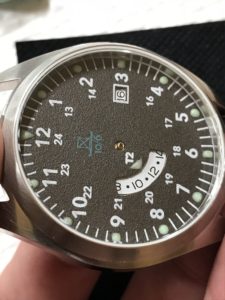
Assembly
The customer wanted a specific hand shape (reminiscent of those on the Longines shown at the beginning), so I found similar hands. At the conclusion of the project, the client and I both agreed that longer hands would be better, but I also wanted to get this on the wrist.
I attached the hands originally chosen, but I am on the look for similar hands with more length that I will swap when the watch needs a service, which for this watch will likely just be a battery change.
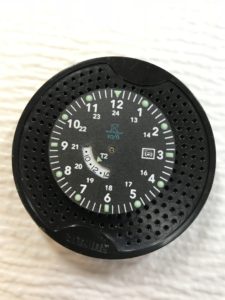
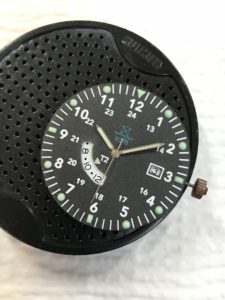
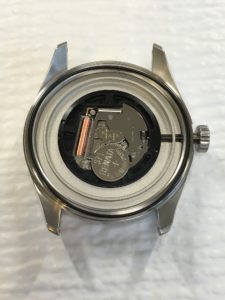
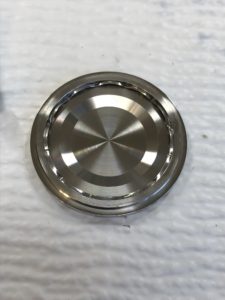

The final product is unique and wonderful, but more importantly what the customer wanted.
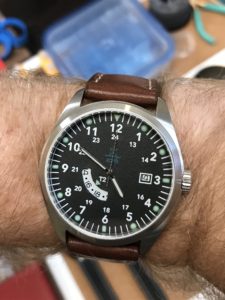

The Customer
I want to acknowledge how much I enjoyed this project and major reason why was the customer. They were decisive, patient, trusting, communicative, and a general joy to work with over the course of nine months. The process of building a custom watch is long but rewarding if the maker and client are on the same page.
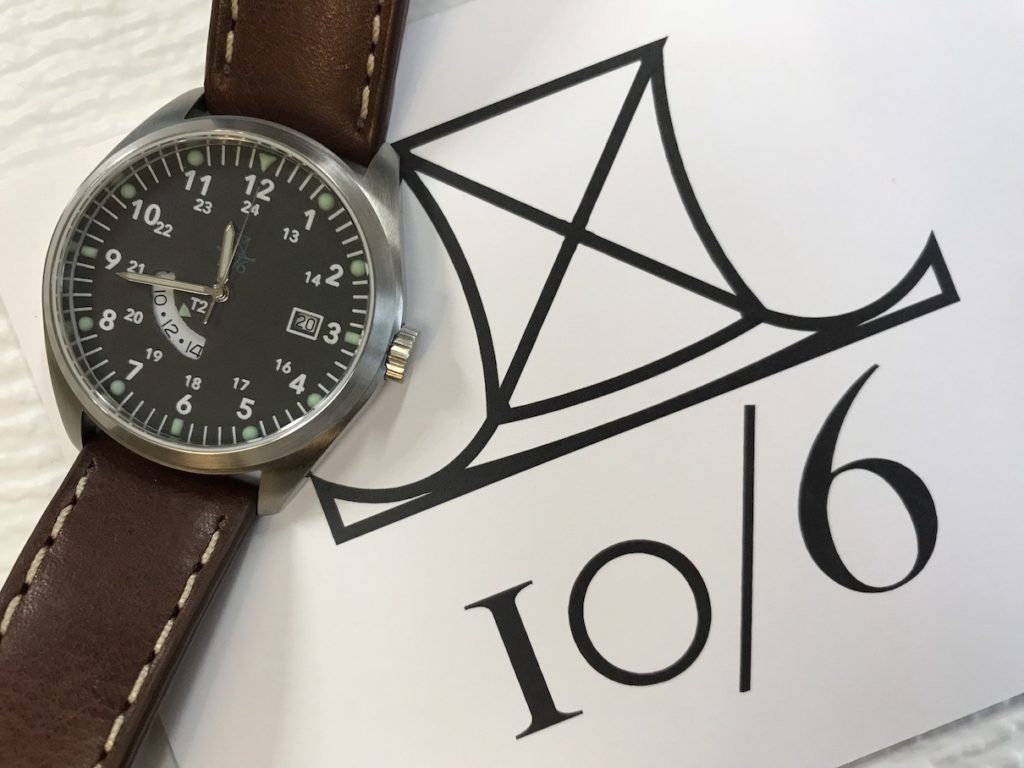
Final Thought
What a challenging and fun build! I learned a ton and built a great relationship with a client. The watch is exactly what the customer wanted and I am proud to have built Duel Time.
